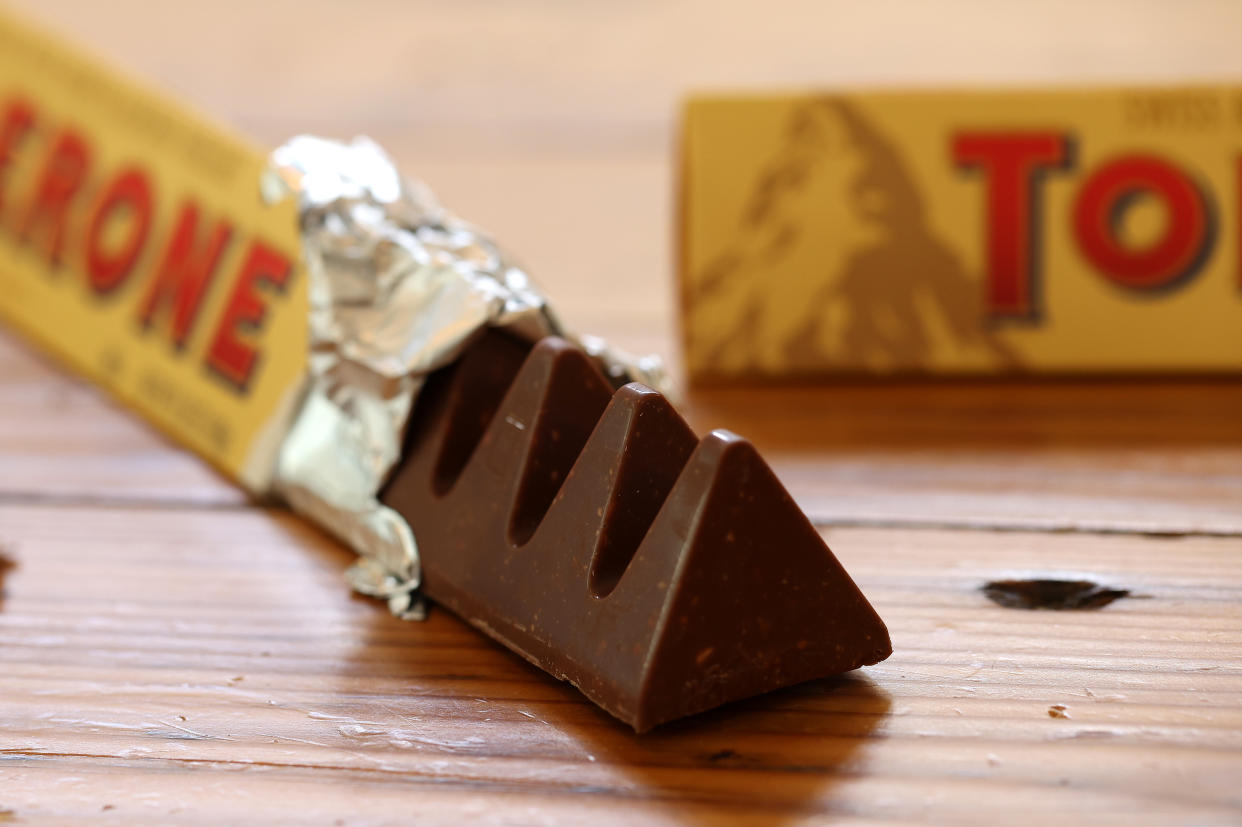Shoppers’ favourite products hit by ‘double-dip shrinkflation’
Shoppers are starting to notice that certain products have repeatedly been made smaller without a reduction in prices, according to research, in what has been called “double-dip shrinkflation.”
As manufacturers have grappled with inflationary pressures in recent years, it appears that this cost burden has increasingly been passed onto consumers in a stealthier way, by making products smaller but not lowering prices.
As a result, the term “shrinkflation” has made headlines, but Barclays' (BARC.L) latest consumer spending report highlighted that shoppers are noticing an acceleration of this trend — “double-dip shrinkflation” — whereby products have been made smaller at least twice without a corresponding reduction in price.
Read more: Shrinkflation and stagflation: What are they and how could they affect your finances
A quarter of the 2,000 respondents to a survey used for Barclays research, released on Tuesday, said that they had started to spot “double-dip shrinkflation.”
Chocolate was the item that was most frequently cited by UK consumers as being hit by “double-dip shrinkflation,” with more than half (57%) saying they noticed this type of product getting repeatedly smaller without a reduction in price.
That was followed by crisps, with 44% saying they had noticed reductions in size but not price, while 41% said they had spotted this trend with biscuits. Other products consumers frequently cited included snack bars, sweets, cereal, and toilet paper.
Ele Clark, retail editor at consumer group Which?, said: "Supermarkets and manufacturers should be upfront with consumers about any changes in the size or ingredients of their products — but reports of 'double-dip shrinkflation' suggest the opposite is happening."
"Businesses must come clean with their customers when making these changes," she added. "Retailers should also ensure that unit pricing is prominent, legible and consistent so that shoppers can easily compare prices across different brands and pack sizes.”
Barclays research showed that while concerns around shrinkflation remained stable in August, 80% of consumers still said this trend was having a negative impact on their finances.
Examples of 'shrinkflation'
A number of brands and retailers have been accused of “shrinkflation.”
One of the more recent examples was reports of shoppers complaining that Waitrose had made toilet rolls of their Essential range smaller. However, a Waitrose spokesperson said that the supermarket had “reduced the price of our toilet roll to reflect the reduction in sheet count.”
Waitrose’s Butter Chicken Curry was also highlighted in research from Which?, released in January, as a product where shoppers said they had noticed “skimpflation” — where products contain fewer key ingredients. In that example, Which? said the amount of chicken in the curry had gone down from 47% to 41%.
Read more: Warmer weather and ‘little luxuries’ boosts UK consumer spending
Waitrose's spokesperson said: "While no retailer is immune to inflation, we’re working incredibly hard with our suppliers to provide great value."
"Our new chicken curry recipe performed better than the previous recipe in benchmarking tests, and we continue to use industry leading higher welfare chicken across our entire ready meals range," they added.
In addition, Which? named a number of products sold at a range of supermarkets where consumers had highlighted “shrinkflation,” including boxes of PG Tips Tasty Decaf Pyramid tea bags and Lurpak slightly salted butter.
In response to its research, Which? said PG Tips manufacturer Lipton Teas had highlighted that the average price of a PG Tips decaf tea bag fell 10% between January 2021 and January 2022.
A spokesperson for Lurpak maker Arla said that prices had on average reduced proportionately. They added that its research showed that "new pack sizes and price points were the most appealing to a greater proportion of shoppers."
Read more: How Keir Starmer's 'painful' autumn budget may impact your pension
Which? said 77% of shoppers noticed “shrinkflation” last year, but this isn’t a new trend.
US economist Pippa Malmgren has been credited for coining “shrinkflation” in its current usage, though historian Brian Domitrovic used the same term in a 2009 book to refer to an economy shrinking while also suffering high inflation.

One of the most high-profile examples of public outrage over “shrinkflation” was when Toblerone widened the gaps between the peaks of chocolate on its bars. However, the brand’s owner, Mondelez International, later decided to return the bar to its original shape.
In fact, the Office for National Statistics said in research published in 2019 that 206 products had shrunk in size between 2015 and 2017. It noted that prices had also tended not to change with size. In addition, previous research from the ONS, found that 2,529 products had shrunk in size between 2012 and 2017.
Although the term has now been around for some time, it’s only more recently that it’s properly become part of the lexicon. Merriam-Webster added “shrinkflation” to its dictionary in 2022, perhaps reflecting increasing concern around the trend as consumers struggled with rising living costs.
Read more: Hottest property spots for first-time buyers in Britain revealed
Even politicians have taken note of the issue, with ministers in the UK raising this with retailers and major brands in a recent inquiry into fairness in the food supply chain.
Meanwhile, the French government announced in April that retailers will have to notify shoppers when products are made smaller without an accompanying reduction in prices.
While “shrinkflation” can be difficult to keep track of, an explainer from Experian noted that ways to limit its impact on your shopping bill include checking container sizes and cost per unit, buying in bulk, trying a different brand, or shopping elsewhere.
Download the Yahoo Finance app, available for Apple and Android.






















